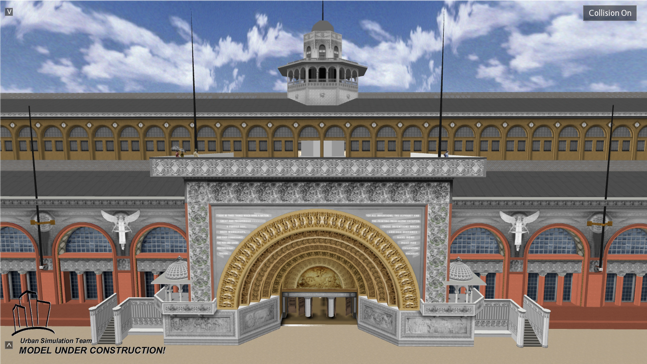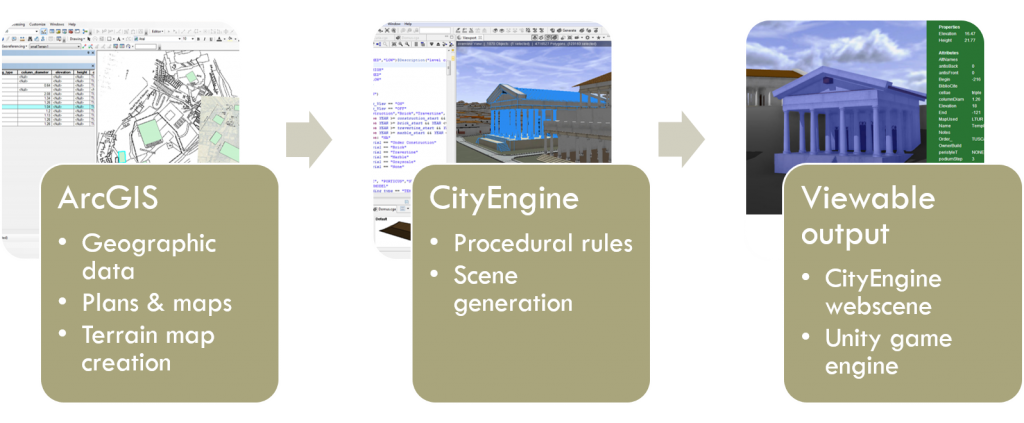Manual 3D modeling techniques are very effective and have had a long history of producing impressive digital humanities projects. Lisa Snyder’s long-running project to recreate the World’s Columbian Exposition of 1863 in Chicago is a prime example of what these techniques can accomplish in skilled hands.
Increasingly, however, computers are doing more of the heavy lifting and there are several methods of generating 3D models that rely on algorithms to create geometric meshes that are being adopted for DH projects. Two major new methods are procedural modeling (which we’ll tackle today) and photogrammetry (next class).
Procedural Modeling
This term refers to the generation of complex geometry from basic shapes through the application of code-based rules. The leading platform for this type of work in DH is CityEngine, owned by ESRI, the makers of ArcGIS. This technique allows a user to produce, modify and update large, textured models of entire cities quickly and iteratively. The output can be explored online or integrated with gaming software or 3D animation packages to produce video games, simulations and movies.
This software was developed for modern city planners and urban architects, but has increasingly been put to use on historic landscapes and built environments, as in the impressive work of Marie Saldaña who developed a Roman temple rule set.
We will explore this technique briefly using CityEngine on the lab computers.
- Download the zipped file of Northfield and its buildings at the link below (or from our Google Drive shared folder) and choose “Import Zipped Project into Workspace” from the File menu to get started.
- Northfield CityEngine Project File
- We will explore the basics of an existing project using this project, to see how CityEngine’s interface, layers, and CGA Shape Grammar Language work.
- We will also check out adding our own data from the digitizing we did last week on our class project.
- With the rest of the time, you can explore the basics of modeling with code by
- following the basic shape grammar tutorial
- Northfield CityEngine Project File

